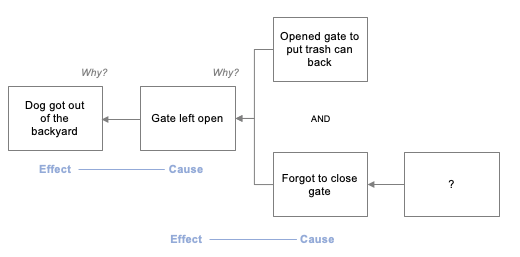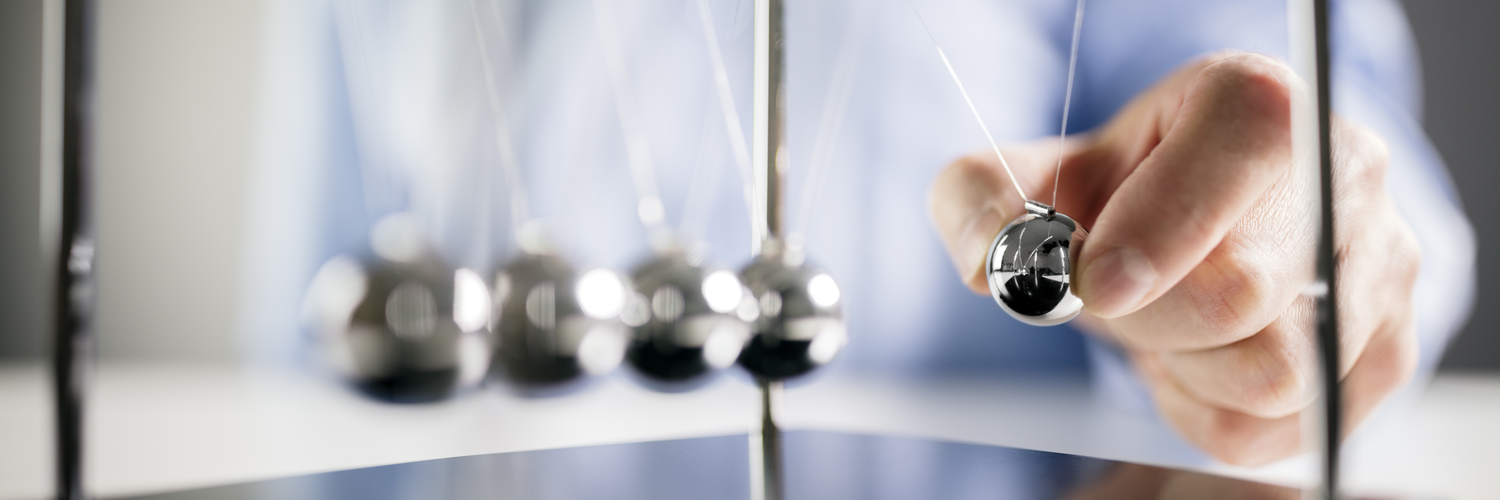In 2nd grade, we learned about cause and effect. You may remember your teacher handing out worksheets with causes in one column and effects in the other. Your assignment was to match the cause to the effect: the dog got out because the gate was left open, Jennifer got an A on the test because she studied, or maybe Scott used an umbrella because it was raining. The teacher explained that a cause makes things happen, and the effect is the thing that happens. That simple cause-and-effect lesson has applications well beyond elementary school.
Solve the Causes to Change Outcomes
The problems within your organization may be safety incidents, production losses, equipment failures or project delays. Rather than finding the right answer, preventing these unplanned events requires an understanding of their causes. Solutions solve problems, but the actual mechanism for reducing risk is solutions control causes. If you wanted to find all the different ways to solve a problem, you would need to know all the causes. The causes of a problem are control points for solutions. If you miss some of the causes, you will miss some of the possible solutions. A thorough cause-and-effect analysis provides problem solvers with access to a range of solution options.
Ask Why Questions Like a 3-Year-Old
Even before those worksheets in elementary school, we learned to identify cause-and-effect relationships. Anyone who has spent time with a 3-year-old has seen this firsthand.
Question: “Why did the dog get out?”
Answer: “Because the gate was left open.”
We can visualize that cause-and-effect relationship with a 1-Why Cause Map™ diagram.

The typical response to a Why question starts with because, which means “caused by.” The effect is the dog got out. And the cause is the gate was left open. The cause had to occur for the effect to happen. Asking a Why question identifies this simple cause-and-effect relationship. But a 3-year-old doesn’t stop with one Why question. The answer to the last question is where the next one begins. The next question will be, “Why was the gate left open?” And it just keeps going. More Why questions will reveal more causes. Kids ask Why questions because they are curious. They want to understand why things are the way they are. That same curiosity allows you to explain the problems in your operations.
Straight Line Cause and Effect
Multiple cause-and-effect relationships can connect to a chain of events. This series is also known as the domino effect. The first domino knocks over the second, which topples the third and so on. Toyota’s 5Whys method is the industrial version of repeatedly asking Why questions. These Why questions are the basis of a scientific approach. It’s how a troubleshooter determines what’s wrong with a piece of equipment, operating unit or information system. You can see a visualization of this chain of events in the below graphic.

A few Why questions in a straight line is an effective way to start an analysis. But it’s only the first stage of a complete investigation. Because there is no set number of Why questions to a problem, there is also no set number of causes. A 5-Why barely digs into the issue, but it is still an effective way to begin – it’s simple, and with evidence, it’s accurate. A 10-Why requires a little more digging and a 50-Why is a lot more. The depth of the analysis depends on how thoroughly the problem needs to be understood to adequately address risk. The point here is regardless of the severity of the issue, the cause-and-effect analysis can begin simple and expand as needed. Don’t make cause and effect complicated in your organization.
See our case study showing how Toyota’s Welding Robot 5-Why expands into a 7- and 17-Why here.
First Principles
Cause and effect is frequently characterized as an outdated, linear model that is too simple for complex, socio-technical issues. Some believe new approaches like emergence and resiliency are needed for today’s sophisticated issues. I believe those arguments are flawed.
Cause and effect is basic. It explains a specific relationship between two things—an effect and a cause. One effect paired with one cause is a building block that can be connected like Legos® to reveal the details within any issue. The reason cause and effect seems too simple is because it is fundamental.
Cause and effect isn’t one of the problem-solving techniques to choose from; it’s a principle on which all problem solving is based.
Cause-and-effect relationships validated with evidence reveal why things are the way they are. It is the core of a scientific approach. If you have an example problem that cannot be dissected with basic cause and effect, please include it in the comments below.
More Than One Causal Path
When people believe cause and effect is only linear, their mental model is back on those worksheets in 2nd grade. For decades, conventional root cause analysis has defined a root cause as a special type of cause. This thinking confuses the basics of cause and effect and inadvertently distorts the explanation of an issue. If problem solving is deficient, problems will reoccur. Some organizations are unaware that cause and effect naturally splits into multiple causal paths where more than one cause is required to produce an effect.
These parallel relationships reveal how a combination of solutions produces a cumulative reduction in risk. Each of the different causal paths provides opportunities for additional layers of protection. A thorough cause-and-effect analysis captured on a Cause Map™ diagram shows how the concepts of risk, reliability and root cause analysis align.

Experiment, Get Evidence on This Approach
Several of the points I covered contradict conventional root cause analysis, so I’d like to get your thoughts in the comments below or via email. Test this approach on one of your problems to your own evidence. What does you company do? What do you agree with? What do you disagree with?
Thank you for reading this, and I look forward to hearing from you. If you’d like to learn more about our Cause Mapping® root cause analyis, watch one of our free webinars, attend a two-hour online short course or register for one of our full online workshops.











